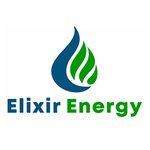EXR - back on site flow testing - results in coming weeks?
Disclosure: S3 Consortium Pty Ltd (the Company) and Associated Entities own 4,299,000 EXR shares and 1,506,429 EXR Options at the time of publishing this article. The Company has been engaged by EXR to share our commentary on the progress of our Investment in EXR over time.
The flow test is about to start again...
Elixir Energy (ASX:EXR) is developing an onshore gas asset in Queensland.
The company has just restarted on site operations in order to flow test its reservoirs to see if it can deliver commercial flow rates.
Shell is nearby drilling a well... and EXR has a data-sharing agreement with Santos...
We think IF EXR can deliver a commercial flow rate in the coming weeks, this asset MAY be of interest to deeper pocketed gas producers down the track.
But for now, let's focus on the current flow test.
After the successful April flow test on the deep free flowing reservoir, EXR is now back on site flow testing shallower reservoirs.
EXR has already proven a peak flow rate of up to 2.3 million cubic feet of gas per day on the lower reservoir.
We saw the EXR share price move pretty aggressively in April on the first round of flow testing - moving from ~7c to 17.5c.
Over the coming weeks it could add serious scale to its project if it can demonstrate even more flow.
EXR is trying to help solve the east coast of Australia’s gas crisis by finding a commercial quantity of gas in the near term.
EXR’s acreage is in the Taroom Trough - Shell and Santos both have ground here, and it is in close proximity to existing infrastructure (this is useful in bringing a gas discovery to market as it improves the economics).
EXR already has an independently certified 2C contingent resource booked for 1.297TCF of gas.
EXR recently raised $6.5M at 10c per share - which we Invested in...
... and we are now very curious to see how the market will react to EXR’s flow test results over the coming weeks.
So now that EXR has re-started operations on site, in a few weeks time we should know if it can get a commercial flow rate or not.
EXR is now just weeks away from a significant catalyst for the company.
The final phase of its flow test on Daydream-2 gas well in Queensland.
This project already has a 1.297 trillion cubic feet contingent gas resource (that’s big).
If EXR is able to prove a commercial flow rate, we think it will be a company-making development.
Late last year EXR surprised the market (and themselves) with the results of the Daydream-2 appraisal well.
EXR was looking to uncover unconventional gas and flow test the well.
Instead, the company found conventional gas (the better kind) that flows freely to the surface.
This was a big milestone for the company.
The next stage was to test the well to see what kind of flow rates it could get (a key risk point for the company).
The first phase of the flow test was set to start a few months ago but was cut short due to equipment failures.
EXR has now fixed the issues and the team is back on site running the remainder of the flow tests.
The purpose of the flow tests are to see if EXR’s project can be commercialised.
A commercial flow rate will unlock a booking of reserves and potential partnership interest in the project.
EXR in its most recent Investor Presentation teased a 500 well development scenario for its project (assuming the flow rate comes in at commercial rates).
Going into the flow rate our expectations across all reservoirs are as follows:
- Bull case = >5mmcf per day flow rate
- Base case = 2-5mmcf per day flow rate
- Bear case = <2mmcf per day flow rate
EXR is well funded going into this flow test re-start.
The company recently completed a $6.25M capital raise at 10 cents in an oversubscribed placement, which we participated in.
We think getting the capital raise out of the way pre-catalyst is a shrewd move by EXR’s management, as it alleviates the market’s perception of funding pressure going into the flow test program and leaves open the blue sky possibilities of a commercial flow rate.
With the funds in hand, it is now over to EXR to deliver on the flow test and (hopefully) produce a meaningful result.
Ultimately, IF the results are positive then any investors looking for exposure to EXR will have to buy on the market.
A reminder of EXR’s Queensland gas project
EXR’s Daydream-2 well is located in Queensland, next door to Santos, Shell and Omega Energy.
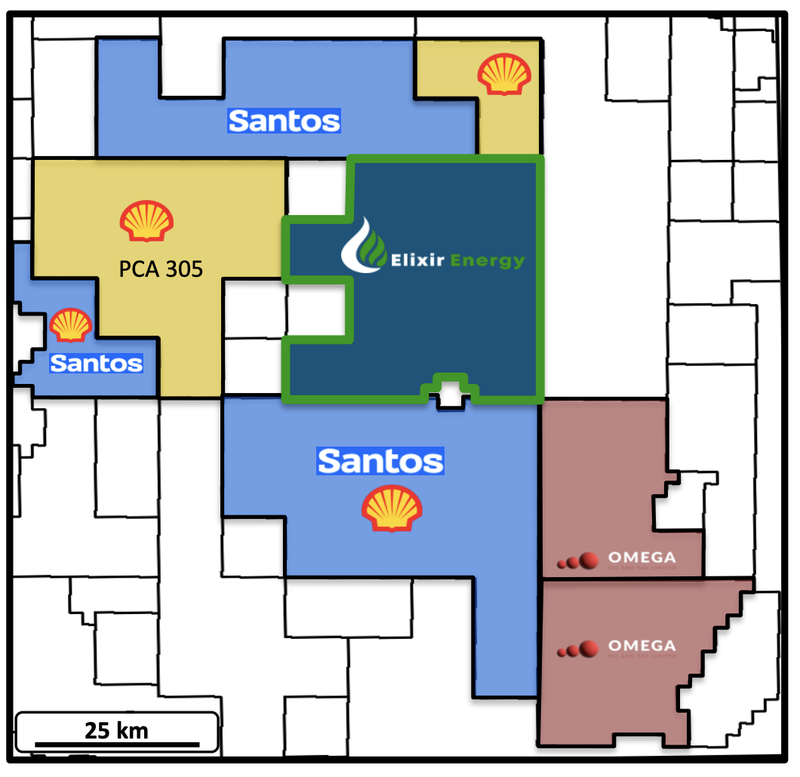
EXR drilled the well in November last year and being an appraisal well (drilling an existing discovery), we had a good idea of what to expect...
Or at least we thought we did.
EXR delivered two big surprises that we don't think anyone (including us) expected:
- EXR found free flowing gas - At the very bottom of the appraisal well, EXR hit free flowing gas. This was a big surprise, as the initial goal of Daydream-2 was to identify unconventional reservoirs that need to be stimulated (fracked) before flowing gas.
- Lab results showed similarities to Perth Basin discoveries - Lab results from the free flowing gas section showed technical similarities with the Perth Basin discoveries of recent years. It’s still early days, but this could be significant not only to EXR, but to the entire basin.
Up until now the region (also known as the Taroom Trough) has only ever found unconventional gas.
This is gas that is trapped underground that needs to be stimulated (or fracked) to flow to the surface.
The discovery of free flowing gas (if there is more of it) could be a game changer for the entire Taroom Trough region.
We covered why the free flowing gas could be big for EXR in the following note:
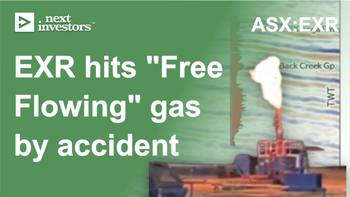
The market definitely liked that news too... EXR’s share price rallied to a high of ~17.5c off the back of initial flow tests in April this year.
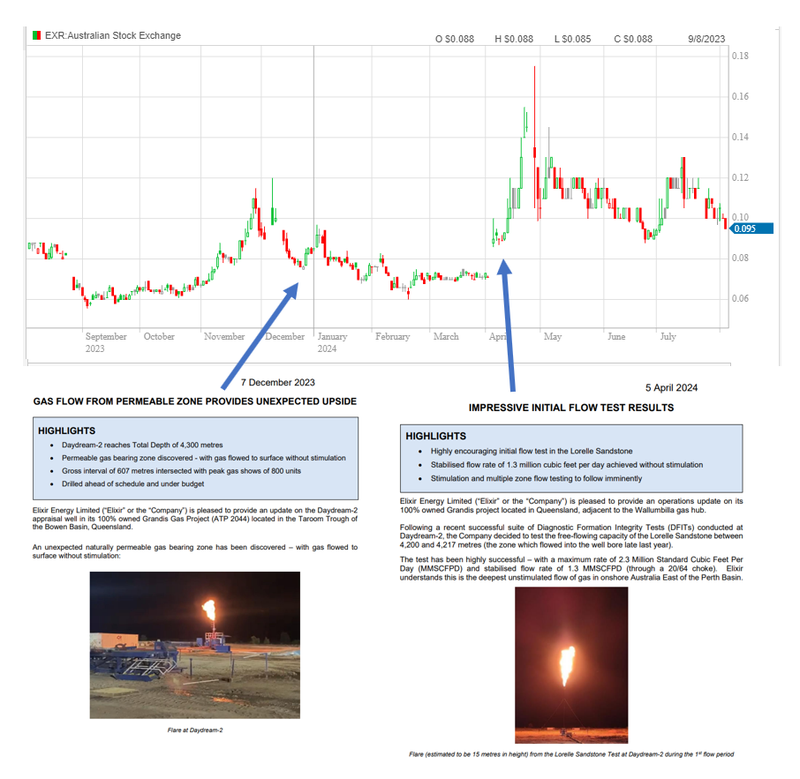
The past performance is not and should not be taken as an indication of future performance. Caution should be exercised in assessing past performance. This product, like all other financial products, is subject to market forces and unpredictable events that may adversely affect future performance.
With this new discovery in hand, and more data to examine, EXR more than tripled its contingent resource to 1.297 trillion cubic feet.
Then, at the start of the year EXR conducted a flow test for the conventional (free flowing gas) and produced:
- Peak flow rate - 2.3 million standard cubic feet of gas per day
- Stabilised flow rate - 1.5 million standard cubic feet of gas per day
This was BEFORE any stimulation of that section of the well AND was from just one reservoir.
Before the company could test any other sections, the flow test had to be paused due to equipment failures and long lead times to replace them.
As of last week, the team is back on site, and flow testing has resumed...
The upcoming flow program, what do we expect?
EXR is now going back in with a plan to test several different sections of its well.
First on an individual basis, and then all at once.
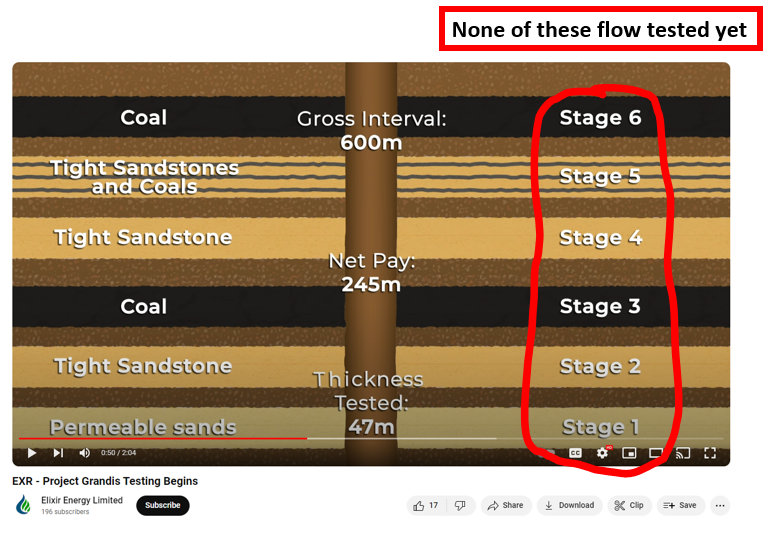
The main marker of success for this next round of work will be the flow rate EXR manages to get from the well.
The target for the program is to try and hit a combined flow test across all reservoir’s above 2.5 million standard cubic feet per day (MMscfd).
That was the number EXR mentioned would be enough to consider the well commercial.
Given EXR has already managed to get a stabilised ~1.3 million standard cubic feet per day (MMscfd) from the Lorelle sandstone alone, we think there is a chance EXR delivers a number way above what anyone expects.
This is another potential scenario where EXR surprises the market to the upside.
AND we think there is plenty of scope for EXR to work up the well to get an even bigger flow rate in the future given this round is focused on testing just ~19% of the wells' gas-bearing zones.
Going into the first phase of the flow test back in April we set the following expectations across all reservoirs:
- Bull case = >5mmcf per day flow rate
- Base case = 2-5mmcf per day flow rate
- Bear case = <2mmcf per day flow rate
Our expectations are largely based around results from other unconventional projects in locations that are far less developed than EXR’s project.
Tamboran Resources for example is developing its project together with American billionaire partners in the Northern Territory where there is no existing infrastructure.
The company is getting flow rates of ~5.2 to 6.4 mmcf/day of flow in horizontal wells (on a 1,000m lateral basis).
Tamboran is currently capped at around $358M.
If the combined flow test for the well hits >5mmscf per day number than we think EXR could unlock:
- Resource upgrades/updates - EXR can upgrade its existing 1.297 TCF contingent resource and 3.6 TCF prospective resource into a bigger contingent number OR a maiden reserve number for the project.
(Reserves are what the bigger players want to see when working out if a project is worth pursuing or not) - Partnership interest - A flow test will give potential farm-in partners strong data to work with, and also gives a good idea of the commercial potential for EXR’s project. EXR has previously mentioned it aims to “gather data for a 500 well development”...
(This is exactly what Tamboran did, attracting interest from American oil and gas billionaires)
Majors are active in this part of Queensland
As mentioned above, the American oil and gas billionaires have already shown interest in Tamboran Resources which is developing an unconventional asset in a far more remote part of Australia.
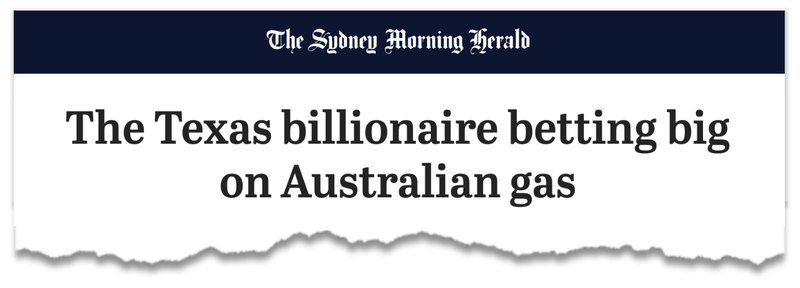
(Source)
The region where EXR operates, in the Taroom Trough, has already been worked up by industry players and corporates with deep pockets.
The billionaire Flannery family and the Texan Butler family (through the privately owned company Tri-Star) are major backers of EXR’s regional peer Omega.
For those who don't know, Tri-Star are pioneers of the Queensland gas industry, having drilled Queensland’s first commercial coal seam gas well in the 1990s.
Those initial investments and subsequent discoveries laid the foundations for Queensland’s $80BN LNG industry.
In addition, Shell is drilling next door to EXR and is looking to emulate the success of a well previously drilled by BG group ~10 years ago.
The well we are referring to is the Daydream-1 discovery roughly 5km away from EXR’s Daydream-2 well drilled back in 2012.
Shell took over BG Group for £47B (Source) roughly 10 years ago.
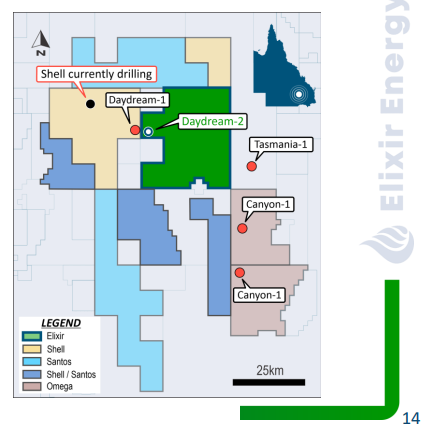
EXR also has in place data sharing agreements with majors Santos and Origin.
The Santos partnership is especially interesting because it is centred around “exploring regional prospectivity” - encouraging technical discussions about the deeper exploration plays in the region.

(Source)
Here is a map showing where EXR’s project is relative to its neighbours:

In its most recent Investor Presentation, EXR teased a 500 well development scenario for its project (assuming the flow rate comes in at commercial rates).
We see EXR’s flow rate as the key step needed to unlock any partnership discussions with majors who can help EXR fund that eventual development plan...
EXR has the right team to make it happen
There is a saying in the mineral exploration world: “The stuff under the ground never changes, it's just the people above it that do”.
Having a good team is just as important as having a good project.
We think EXR has the right team in place to build a company out of this Queensland asset (assuming the flow tests are a success).
EXR’s Chairman Richard Cottee has built up and sold a gas company before and is considered “the Godfather” of Coal Seam gas in Queensland.
Cottee took Queensland Gas Company from a $20M capped junior through to a $5.3BN takeover back in 2008 - the company doing the buying was BG Group (now Shell)...
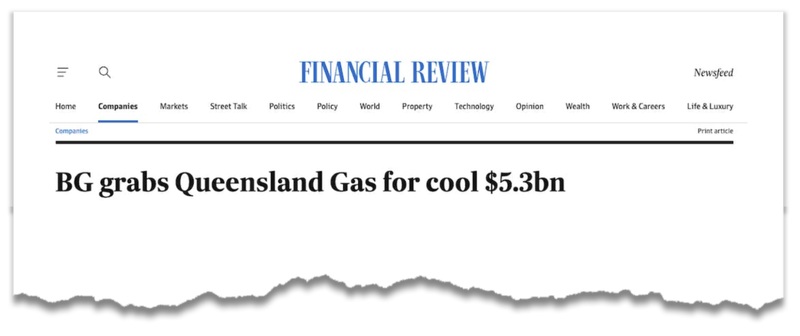
(Source)
We also note EXR’s Managing Director Neil Young was ex-Santos management, and Director Stephen Kelemen ran Santos’ Coal Seam gas portfolio.
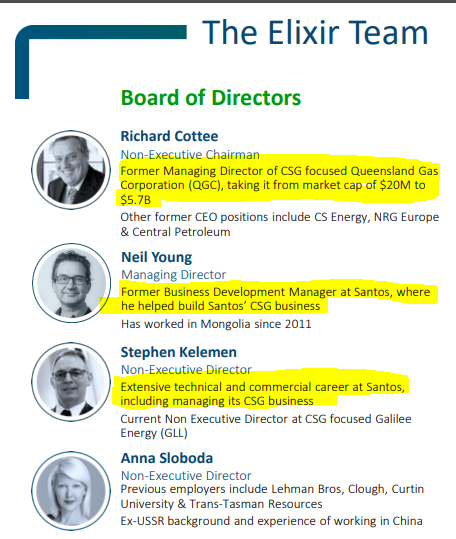
We think EXR has the right team and the right asset to work its way toward achieving our Big Bet which is as follows - of course a lot of things will need to go right for it to happen though.
Our Big Bet for EXR:
“EXR to achieve a $1BN market cap through successfully advancing one or more of its three projects: its Mongolia gas project, Mongolia green hydrogen project, and/or its Queensland gas project.”
NOTE: our “Big Bet” is what we HOPE the ultimate success scenario looks like for this particular Investment over the long term (3+ years). There is a lot of work to be done, many risks involved - just some of which we list in our EXR Investment Memo. Success will require a significant amount of luck. There is no guarantee that our Big Bet will ever come true.
East coast gas macro investment thematic
Another thing going for EXR’s project is that it sits in QLD, where it has exposure to:
- The global Liquefied Natural Gas (LNG) markets - The three LNG plants in Gladstone next to EXR’s project have never operated at full capacity and could take more gas feedstock to ship to international markets.
- The east coast gas markets - East coast is forecast to be short gas in 2028 and expected to start experiencing momentary shortages in 2025-6. EXR could provide gas into that market.
Both markets are challenged from a supply demand perspective and we think that in the medium term, the pressure will be to the upside.
Global markets had a supply shock in 2022 when the Russia/Ukraine conflict broke out.
The Europeans were scrambling for supply and were resorting to importing LNG from places like Australia.
That put pressure on global LNG prices. With demand from Asia always increasing, we think demand for LNG products will continue to be high going forward.
EXR’s project sits next to the LNG plants in Gladstone that have never operated at peak capacity and can therefore take in new gas supplies.
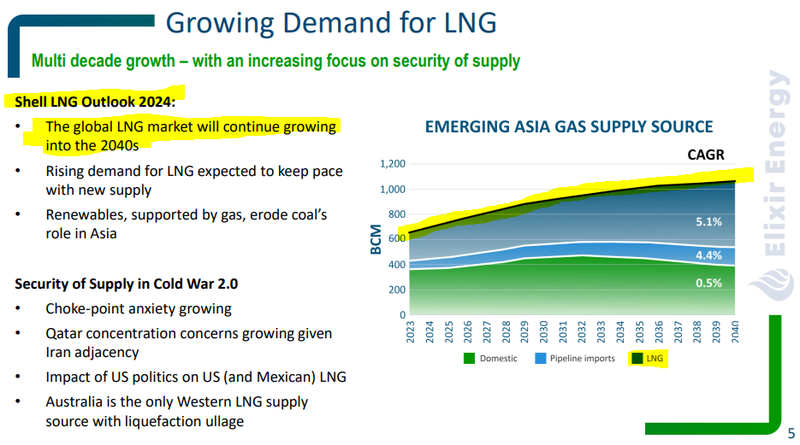
As for the east coast market, the story for a long time has been that there will be a big supply crisis due to falling investment in new supply and falling production from the Gippsland gas fields in offshore Victoria.
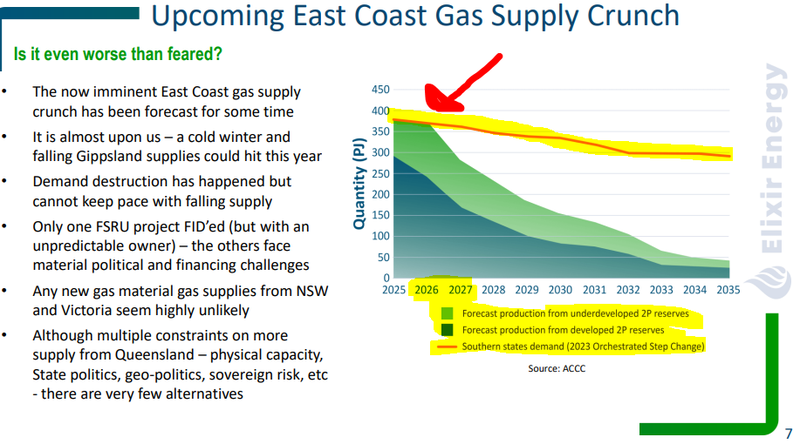
The Australian Energy Market Operator (AEMO) event put out a statement titled “Gas market outlook signals need for new investment” which says supply shortages could start as early as the 2025 winter months.

The AEMO specifically said “AEMO’s latest gas market outlook for Australia’s east coast has forecast a gap in gas supply for southern states from 2028, as production from Bass Strait continues to decline faster than demand”

We think EXR is about to deliver major catalysts from its QLD gas project at the right point in time, just ahead of the macro theme heating up.
Long time readers will know that we think how hot a macro investment thematic oftentimes can have the biggest impact on a company’s share price.
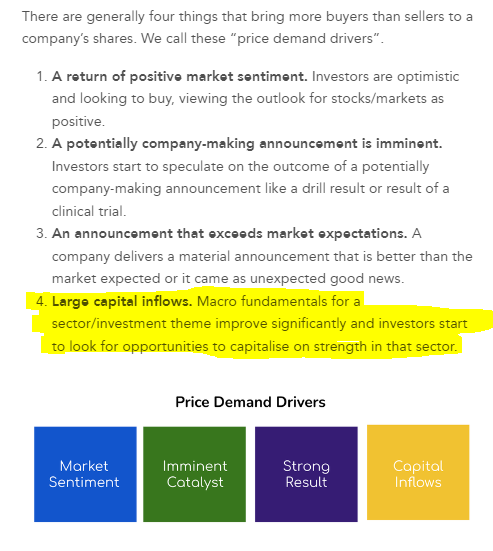
🎓 See our educational article on what makes share prices go up here: Why do shares prices go up?
What are the risks?
Exploration risk
There is risk that EXR does not achieve a reasonable flow rate from appraisal drilling at its Daydream-2 appraisal well at its Queensland gas project.
Source: “What could go wrong” section - EXR Investment Memo 29 March 2023
The results from EXR’s Daydream-2 well are relatively strong so far but the main risk for EXR is still “exploration risk”.
The upcoming flow test results will ultimately dictate whether or not EXR’s project can produce oil/gas at commercially viable rates.
Uneconomic flow rates would mean EXR spends a lot of capital for very little return in terms of shareholder value, which we think would lead to a re-rate down in EXR’s share price.
To see all the risks to our EXR Investment thesis, check out our EXR Investment Memo here.
Our EXR Investment Memo
In our EXR Investment Memo, you can find the following:
- Our EXR Big Bet
- Key objectives for EXR
- Why we are Invested in EXR
- The key risks to our Investment thesis
- Our Investment plan
General Information Only
This material has been prepared by StocksDigital. StocksDigital is an authorised representative (CAR 000433913) of 62 Consulting Pty Limited (ABN 88 664 809 303) (AFSL 548573).
This material is general advice only and is not an offer for the purchase or sale of any financial product or service. The material is not intended to provide you with personal financial or tax advice and does not take into account your personal objectives, financial situation or needs. Although we believe that the material is correct, no warranty of accuracy, reliability or completeness is given, except for liability under statute which cannot be excluded. Please note that past performance may not be indicative of future performance and that no guarantee of performance, the return of capital or a particular rate of return is given by 62C, StocksDigital, any of their related body corporates or any other person. To the maximum extent possible, 62C, StocksDigital, their related body corporates or any other person do not accept any liability for any statement in this material.
Conflicts of Interest Notice
S3 and its associated entities may hold investments in companies featured in its articles, including through being paid in the securities of the companies we provide commentary on. We disclose the securities held in relation to a particular company that we provide commentary on. Refer to our Disclosure Policy for information on our self-imposed trading blackouts, hold conditions and de-risking (sell conditions) which seek to mitigate against any potential conflicts of interest.
Publication Notice and Disclaimer
The information contained in this article is current as at the publication date. At the time of publishing, the information contained in this article is based on sources which are available in the public domain that we consider to be reliable, and our own analysis of those sources. The views of the author may not reflect the views of the AFSL holder. Any decision by you to purchase securities in the companies featured in this article should be done so after you have sought your own independent professional advice regarding this information and made your own inquiries as to the validity of any information in this article.
Any forward-looking statements contained in this article are not guarantees or predictions of future performance, and involve known and unknown risks, uncertainties and other factors, many of which are beyond our control, and which may cause actual results or performance of companies featured to differ materially from those expressed in the statements contained in this article. S3 cannot and does not give any assurance that the results or performance expressed or implied by any forward-looking statements contained in this article will actually occur and readers are cautioned not to put undue reliance on forward-looking statements.
This article may include references to our past investing performance. Past performance is not a reliable indicator of our future investing performance.

